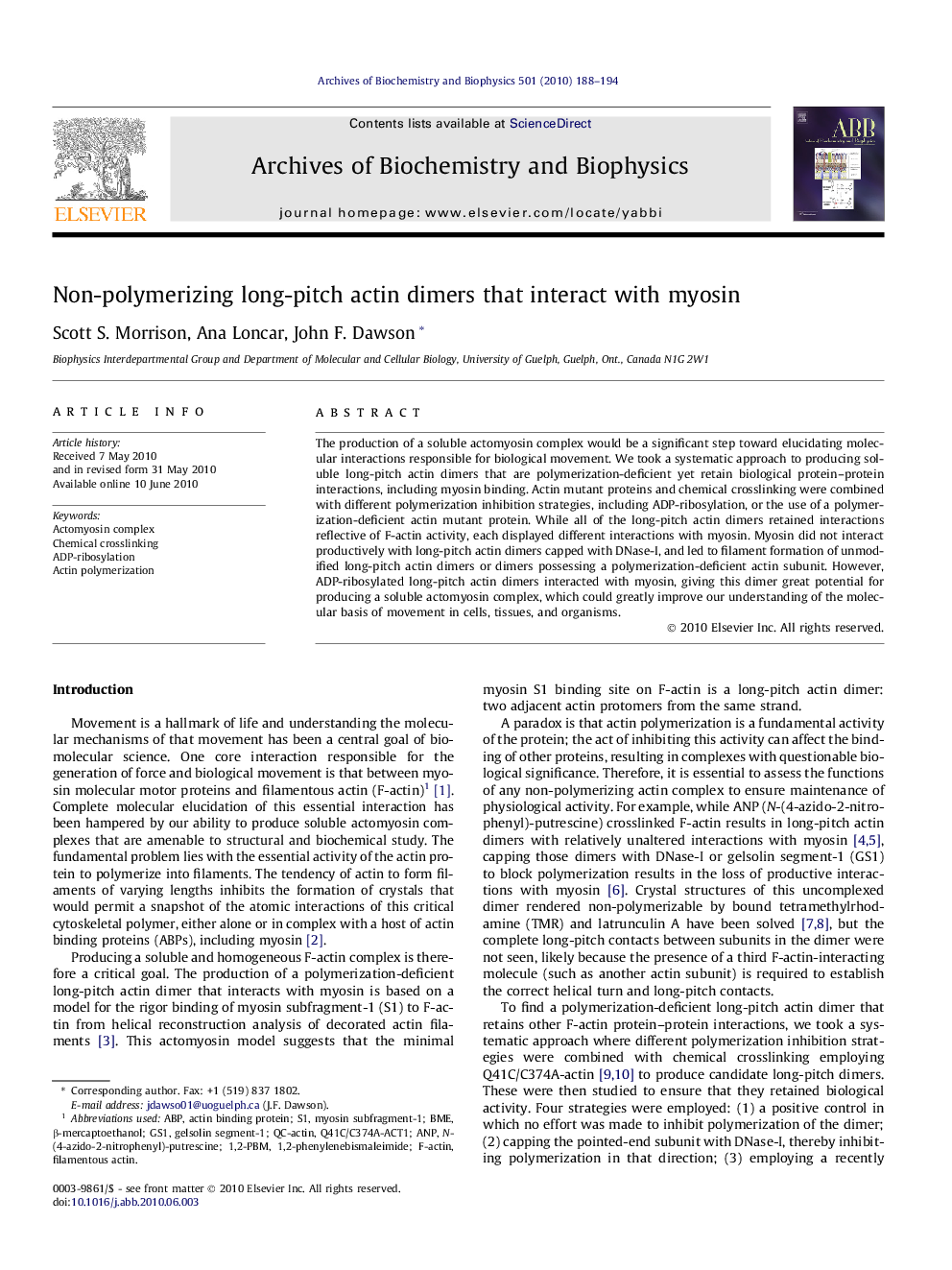| Article ID | Journal | Published Year | Pages | File Type |
|---|---|---|---|---|
| 1925978 | Archives of Biochemistry and Biophysics | 2010 | 7 Pages |
The production of a soluble actomyosin complex would be a significant step toward elucidating molecular interactions responsible for biological movement. We took a systematic approach to producing soluble long-pitch actin dimers that are polymerization-deficient yet retain biological protein–protein interactions, including myosin binding. Actin mutant proteins and chemical crosslinking were combined with different polymerization inhibition strategies, including ADP-ribosylation, or the use of a polymerization-deficient actin mutant protein. While all of the long-pitch actin dimers retained interactions reflective of F-actin activity, each displayed different interactions with myosin. Myosin did not interact productively with long-pitch actin dimers capped with DNase-I, and led to filament formation of unmodified long-pitch actin dimers or dimers possessing a polymerization-deficient actin subunit. However, ADP-ribosylated long-pitch actin dimers interacted with myosin, giving this dimer great potential for producing a soluble actomyosin complex, which could greatly improve our understanding of the molecular basis of movement in cells, tissues, and organisms.
